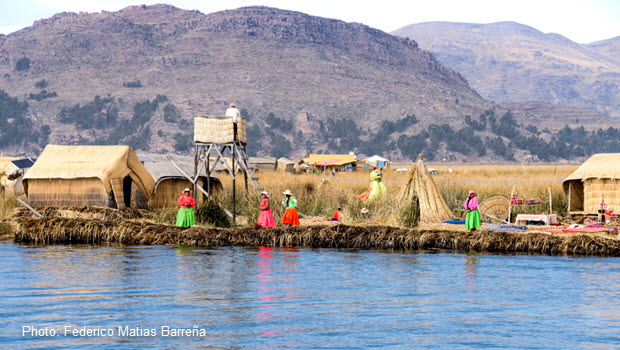
Uros: Floating Islands in Peru
Among Peru’s countless treasures are Lake Titicaca‘s uros islands: man-made floating islands of reeds where the indigenous Uros peoples have lived since before the time of the Incas. Besides being a remarkable archaeological and anthropological wonder, the Uros floating Islands in Peru are also a top tourist attraction, where tourists can go explore the artificial islands and interact with the people who inhabit them.
How do the Uros Floating Islands in Peru float?
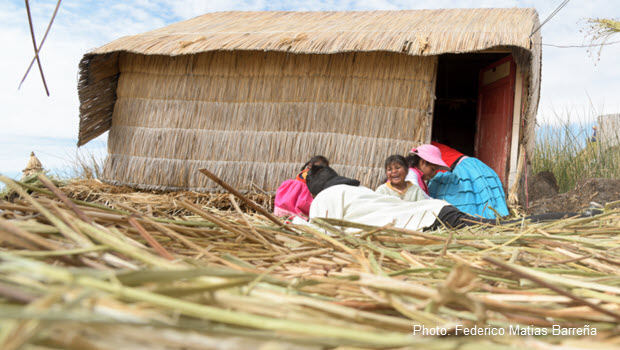
The artificial islands are made from totora reeds, a type of plant endemic to the region. Because the reeds at the bottom of the islands weaken and rot over time, new reeds are continuously added to the top (a process tourists may get to witness). For people not native to the island, the sensation of walking on the reeds is quite unusual; with every step, one’s foot will sink a few inches into the reeds.
How many uros islands are there?

There are estimated to be between 80 and 120 floating islands on Lake Titicaca. However, some of them aren’t accessible to tourists, as certain elements of the Uros tribe prefer to live a more secluded lifestyle. Others, however, warmly welcome the arrival of tourists to visit their islands. They happily show tourists around their islands and sell a variety of unique artisan handicrafts.
What other tourist attractions exist at Lake Titicaca?
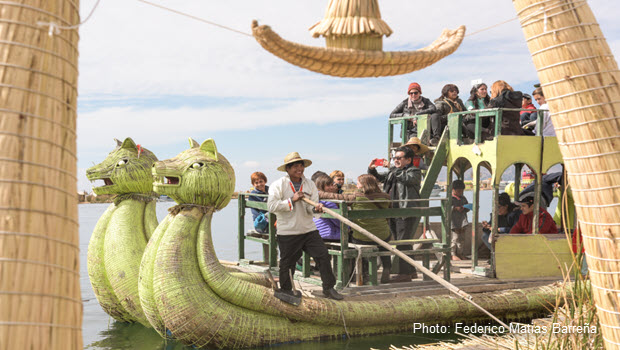
Besides the floating islands, which are the main attraction, a popular site is AmantanÃ, a natural island in the lake where there are several hostels and lodges. It’s common for tourists to visit Amantanà and stay one night, enjoying the serenity of the island and visiting some of its archaeological sites.
Another natural island frequented by tourists is Taquile, which is a little busier than Amantanà and also offers lodging.
There are many tours that provide tourists with a chance to visit both the artificial Uros islands and Amantanà and/or Taquile.
What’s the best time of year to visit the Lake Titicaca floating islands?
Lake Titicaca is the world’s highest navigable body of water, at an astonishing 3,812 meters (12,500 feet). That is to say, at such an altitude, winter can get pretty chilly. The summer months (November through February) are generally considered to be the best time to visit.
If you’re interested in visiting for a festival, these are some of the best options:
- Mid-January: Pago A La Tierra (Earth Tribute) on the island of AmantanÃ, characterized by music, dance, and drinking.
- Late July through Early August: Fiesta de Santiago on the island of Taquile, known for its dancing and music.
- Mid-August: Feria de Artesanias (Artisan Fair) on the island of AmantanÃ, a week of artisan markets.
How do I visit Lake Titicaca and the floating islands?
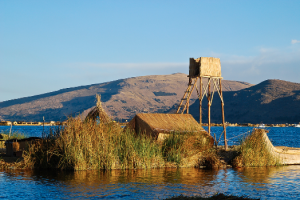
Trips to visit Lake Titicaca and the artificial island have surged in popularity in recent years, as both a result of tourists’ direct interest in visiting the islands and the natural residual effects of more tourists coming to Peru in general. Trips to visit the island embark from Puno, a medium-sized city on the Peruvian side of Lake Titicaca (which forms part of the Peruvian-Bolivian border).
Fertur PeruTravel offers a four-day, three-night package to Puno, which includes two nights in Puno, excursions to the Uros islands and the island of Taquile, a one-night homestay on the island of AmantanÃ, and a visit to the pre-Incan cemetery of Sullistani, outside of Puno. The tour also includes transfers to and from the airport and English-speaking guides throughout the experience. Learn more here: Puno Tour 4 Days
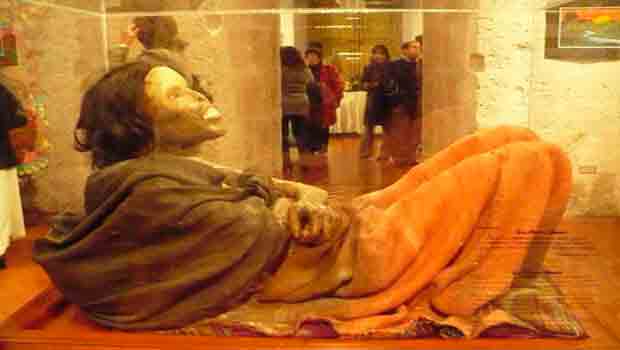 Arequipa tour attraction Juanita mummy placed in deep freeze
Arequipa tour attraction Juanita mummy placed in deep freeze  Refurbishing pre-Inca water channels to fix Lima’s desert water woes
Refurbishing pre-Inca water channels to fix Lima’s desert water woes 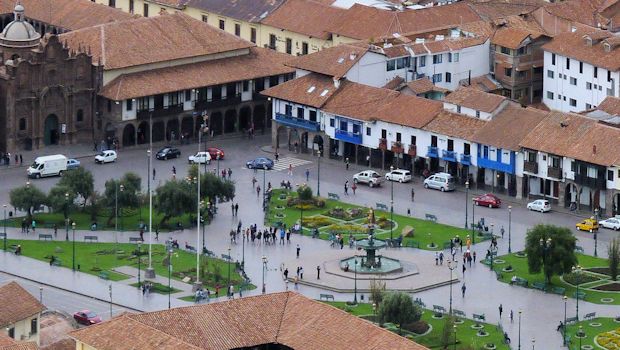 Pilot project: Cusco’s main plaza a vehicle-free pedestrian zone
Pilot project: Cusco’s main plaza a vehicle-free pedestrian zone  Lima voted TOP property in MONOPOLY HERE & NOW: World Edition
Lima voted TOP property in MONOPOLY HERE & NOW: World Edition  Make Arequipa a port of call on a luxury cruise vacation
Make Arequipa a port of call on a luxury cruise vacation 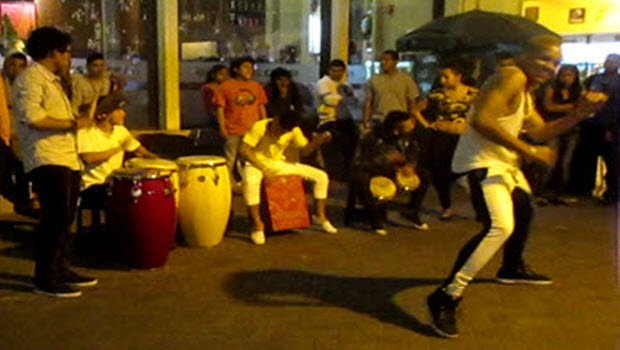 Trip to Peru: Lima’s street theatre renaissance
Trip to Peru: Lima’s street theatre renaissance 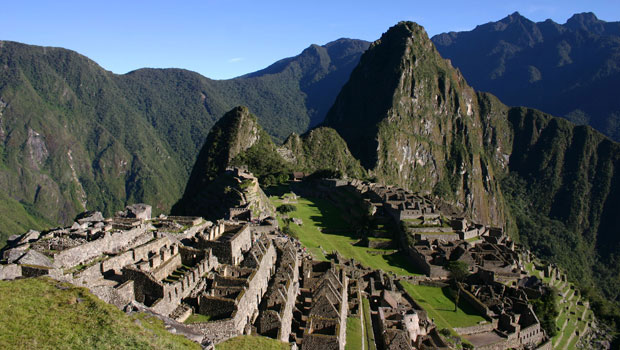 Does it make sense to visit Machu Picchu in January
Does it make sense to visit Machu Picchu in January 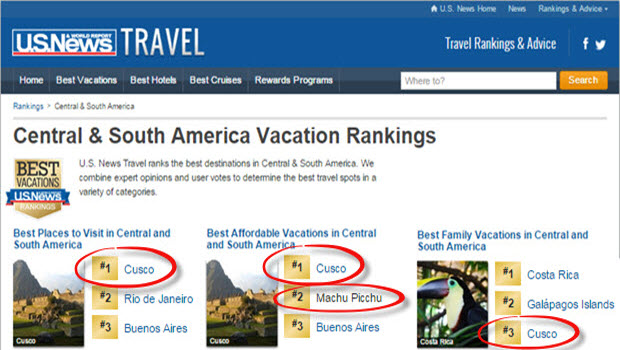 Cusco ranked “Best Destination” and “Best Affordable Vacation” by US News
Cusco ranked “Best Destination” and “Best Affordable Vacation” by US News